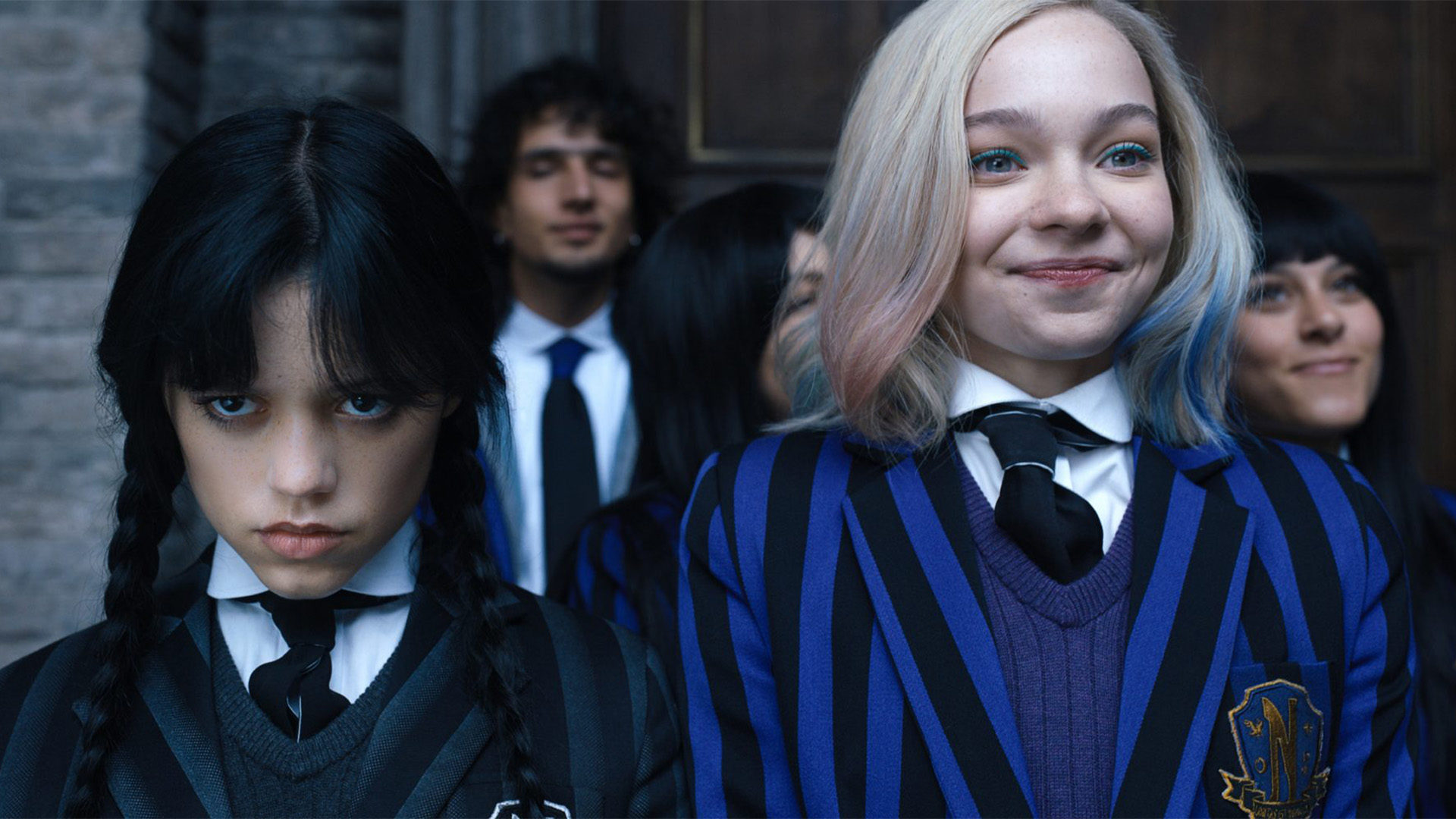Over Christmas break, I had the chance to watch the newest adaptation of a classic-TV-family: Netflix’s Wednesday, a series that centers on the adolescent girl in the eccentric Addams Family. If you liked the original show, the movie, or the various pop culture adaptations that keep the Addams Family in the American psyche, you’ll probably enjoy this new series.
But I suspect even audiences unfamiliar with the source material will appreciate Wednesday. The series might appeal to fans of Harry Potter for the way it incorporates elements of the boarding school culture of Hogwarts. Filmed in Romania, Wednesday’s eerie Transylvanian castles and scenery add a distinctive feel. And the show’s dark humor and offbeat pacing ensure the scary or gruesome moments never overwhelm what is essentially a lighthearted mystery story.
Also on display? Clear allusions to recent debates about how to tell history, if and when we should erect statues that honor flawed people in our past, and whether a moral reckoning is always a matter of right vs. wrong or should include shades of gray.
Celebrating the Outcast
In a culture steeped in the strange stew of expressive individualism (“You be you no matter what!”) and identity politics (“You’re defined by characteristics associated with your group”), it’s not a shock to see the world of Wednesday divided in two ways. First, there are the “normies” and the “outcasts.” The town of Jericho is full of normal people (think “Muggles” from the Harry Potter world), while the school for “outcasts” is full of weirdos with magical gifts. Of course, the outcasts are, in general, cool, and normies are, in general, oppressive.
But secondly, there are groups among the outcasts, each defined by a set of magical characteristics. We see interactions between individuals of these groups (they’re all “outcasts,” of course), but it’s clear there are certain expectations and elements of cultural peer pressure that align with one’s identity as a member of a tribe. And so, Wednesday provides a fascinating look at a culture of “just be yourself” expressive individualism and “don’t betray your group” identity politics.
Black and White vs. Shades of Gray
There’s an illuminating conversation in the third episode between Wednesday and the school’s principal, Larissa Weems. Even though both are outcasts, the principal wants to make nice with the normies and create better civil relations. But Wednesday balks at Weems’s attempt to whitewash the past and ignore the town’s egregious treatment of outcasts in the days of old. (In flashbacks, we meet clearly caricatured versions of the New England Puritans—totalitarian leaders with an irrational hatred of anyone who departs from the norm, enjoying witch hunts and thundering denunciations of all that’s evil. A scene in the present day shows the destruction of a statue of the town’s evil forefather.)
“Those who forget history are doomed to repeat it,” Wednesday says.
Principal Weems wants to look for common ground—to find opportunities to reach beyond the hardened categories of “normie” and “outcast.” She sees the opportunity to rewrite the rules and create a better future.
But Wednesday insists nothing has really changed since the past. “They still hate us,” she says. “Only now they sugarcoat it with platitudes and smiles.”
And when Weems claims that “the world isn’t always black and white” and “there are shades of gray,” Wednesday pushes back. “Maybe for you,” she says. “But it’s either they write our story or we do. You can’t have it both ways.”
It’s clear that Wednesday doesn’t equate “fighting for the truth” with recounting the past in all its complexity. Rather, it means adopting the right narrative related to the past. In other words, the way forward is neither by charitably reckoning with the good and evil of a town’s ancestors nor by attempting to understand the successes and failures of previous generations and place them in context. The future belongs to the moral absolutist who insists on one version of the story winning over another.
From Moral Relativism to Moral Absolutism
Watching Wednesday, I was struck by how quickly Hollywood seems to have moved from a celebration of moral relativism to a passion for moral absolutism. Many of the movies from 20 or 30 years ago decried a black-and-white way of looking at the world. Think of the subversiveness of Pleasantville or the moral relativism in American Beauty. Some of the most lauded films deliberately obscured moral issues, celebrated the erasure of boundaries, or demolished anything resembling a black-and-white moral standard. The characters who held to moral absolutes were cast as either the benighted relics of an earlier day or the villains whose commitment to moral truth led to violence.
Fast forward to today, and a show like Wednesday doesn’t portray the moral relativist as a hero standing up against the moral absolutist villain. Instead, the hero champions a competing vision of moral absolutism.
Wednesday Addams, who at one point declares her unbelief in God and the afterlife, sees the world in zero-sum terms: the “outcast narrative” must win. There can be no view of the ancient normies as anything other than totally and terribly evil, which, ironically is exactly how the ancient normies themselves perceived the ancient outcasts.
Gray is gone. So is any Solzhenitsyn-inspired sentiment of “the line of good and evil dividing every human heart.” All that’s left is power. And, of course, the story. And without God and the moral law, or any eternal standard by which to judge the behavior of people past or present, all we have is “good and evil” determined not by eternal moral law but by who controls the narrative.
If you would like my future articles sent to your email, as well as a curated list of books, podcasts, and helpful links I find online, enter your address.
